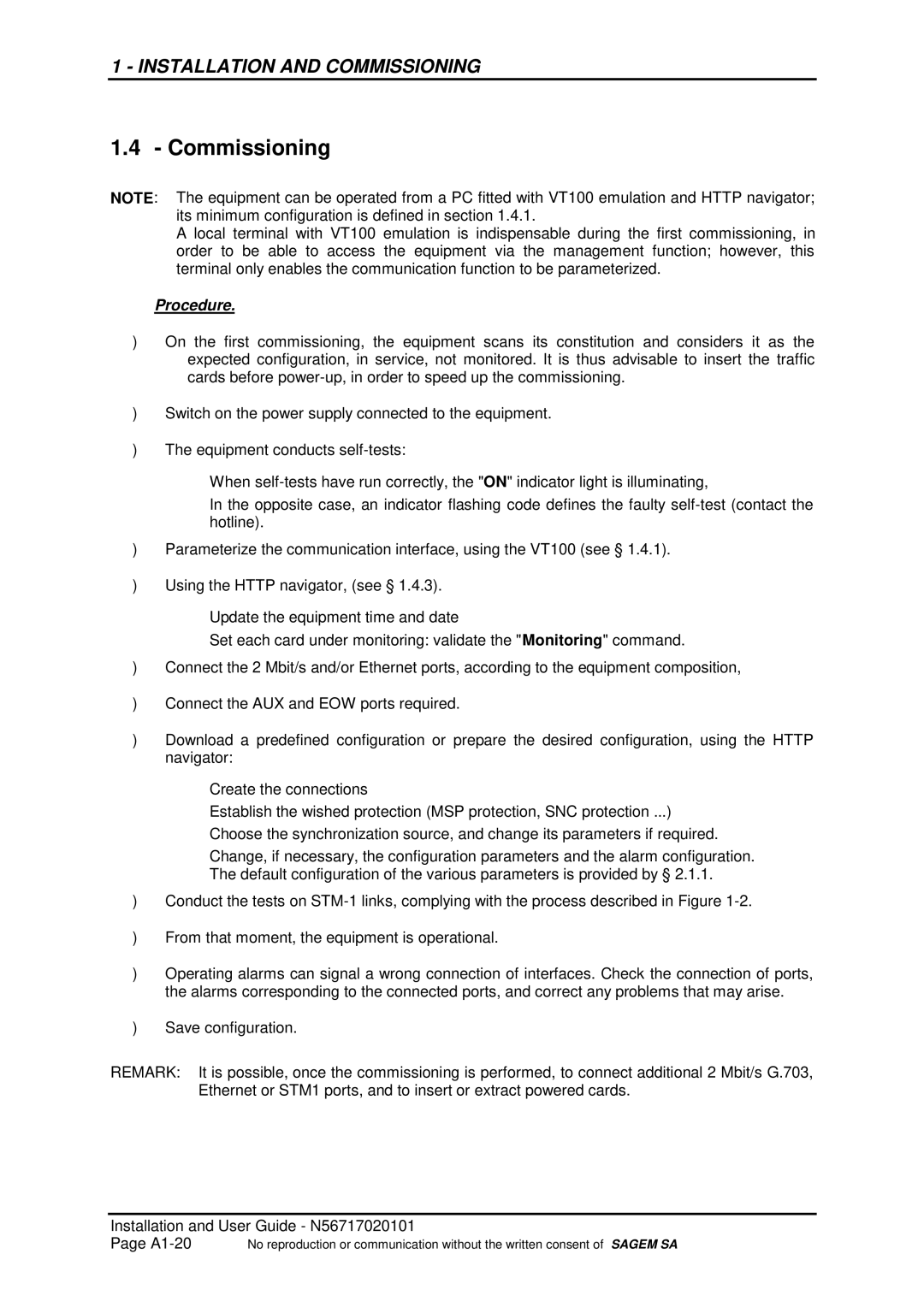
1 - INSTALLATION AND COMMISSIONING
1.4 - Commissioning
NOTE: The equipment can be operated from a PC fitted with VT100 emulation and HTTP navigator; its minimum configuration is defined in section 1.4.1.
A local terminal with VT100 emulation is indispensable during the first commissioning, in order to be able to access the equipment via the management function; however, this terminal only enables the communication function to be parameterized.
)Procedure.
On the first commissioning, the equipment scans its constitution and considers it as the expected configuration, in service, not monitored. It is thus advisable to insert the traffic cards before
)Switch on the power supply connected to the equipment.
The equipment conducts
SWhen
In the opposite case, an indicator flashing code defines the faulty
)Parameterize the communication interface, using the VT100 (see § 1.4.1).
Using the HTTP navigator, (see § 1.4.3).
SUpdate the equipment time and date
Set each card under monitoring: validate the "Monitoring" command.
Connect the 2 Mbit/s and/or Ethernet ports, according to the equipment composition,
)Connect the AUX and EOW ports required.
Download a predefined configuration or prepare the desired configuration, using the HTTP navigator:
Create the connections
Establish the wished protection (MSP protection, SNC protection ...)
SChoose the synchronization source, and change its parameters if required.
Change, if necessary, the configuration parameters and the alarm configuration. The default configuration of the various parameters is provided by § 2.1.1.
Conduct the tests on
From that moment, the equipment is operational.
Operating alarms can signal a wrong connection of interfaces. Check the connection of ports,
)the alarms corresponding to the connected ports, and correct any problems that may arise. Save configuration.
REMARK: It is possible, once the commissioning is performed, to connect additional 2 Mbit/s G.703, Ethernet or STM1 ports, and to insert or extract powered cards.
Installation and User Guide - N56717020101
Page | No reproduction or communication without the written consent of SAGEM SA |
